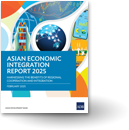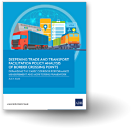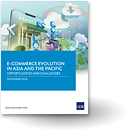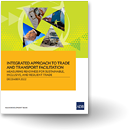Global supply chains, development and international trade
In a new paper written for the September 2011 NBER-Bank of England conference “Globalization in an Age of Crisis: Multilateral Economic Cooperation in the Twenty-First Century", I argue that revolutionary transformations of industry and trade occurred from 1985 to the late-1990s--namely the internationalization of supply chains (Figures 1 and 2). This transformed the already important role of trade in industrialization and development. Prior to this transformation, successful industrialization inevitably meant building a domestic supply chain. Today, however, industrializing economies successfully join supply chains and grow rapidly because offshored production brings elements that took recently industrialized economies like the Republic of Korea and Taipei,China decades to develop domestically. These changes have not been fully reflected in “high development theory”--a lacuna that may lead to misinterpretation of data and inattention to important policy questions.
Figure 1. Symptom of Second Unbundling: Trade Change
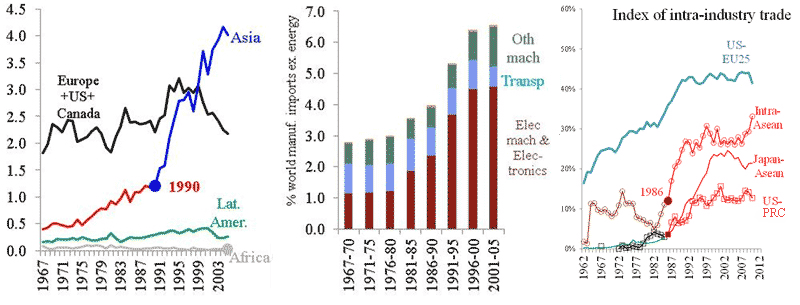
Notes: PRC = The People's Republic of China
Source: Author's calculations.
Figure 2. Symptom of Second Unbundling: Global Manufacturing Change
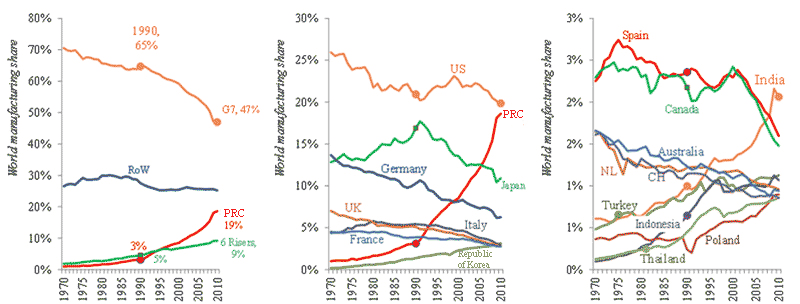
Notes: PRC = The People's Republic of China; 6 risers = Republic of Korea, India, Indonesia, Thailand, Turkey, Poland.
Source: unstats.un.org.
The roles of governments, trade, and multinational corporations are completely different when a nation joins a supply chain. Two points are particularly worth noting: Industrialization has become easier and faster, but it has also become less meaningful in terms of a development milestone (Figure 3). Industrialization has become faster and easier since international supply chains make industry less "lumpy" and less interconnected domestically. But industrialization has also become less meaningful for the same reasons. The fact that the Republic of Korea could export domestically-designed car engines used to be a testimony to its rich-nation status. But now exporting sophisticated manufactured goods is no longer the hallmark of "having arrived". Rather it may prove nothing more than simply reflecting a nation’s position in an international supply chain.
Figure 3. Industrialisation's Touchstone: Lumpiness

Source: Author’s calculations.
Moreover, the challenges facing policy makers are now quite different given the existence of international supply chains. Under the 20th century view of industry, a deep industrial base was a prerequisite for export success, but a large market was necessary to support the industrial base. The search for markets was thus a key element of trade and industrialization policy. With international supply-chains, however, demand is easy to find. Instead, policy makers face many new questions, such as which supply chains should be joined? Should nations strive to set up their own international production networks? What is the optimal technology policy (in terms of intellectual property rights, etc.)? What is the role played by size? Can smaller nations do what the People's Republic of China has done on forced technology transfer? Different nations are trying different things without guidance from formal models that explicitly incorporate supply chains.
Ignoring the developmental implications of the 2nd unbundling’s impact will guarantee continuing puzzlement by development economists. Global supply chains are now a fixed point in the typology of developing-nation industrial planners. No winning industrialization effort in the past 20 years has been able to ignore this reality. The goal of this research is to make the prima facie argument that incorporation of such considerations into development theory may yield important insights.
